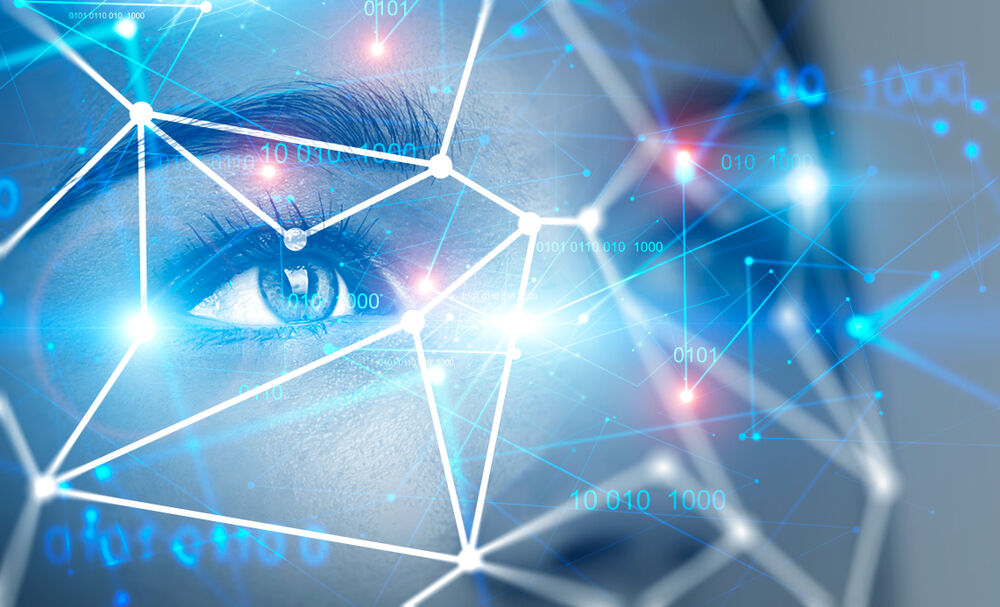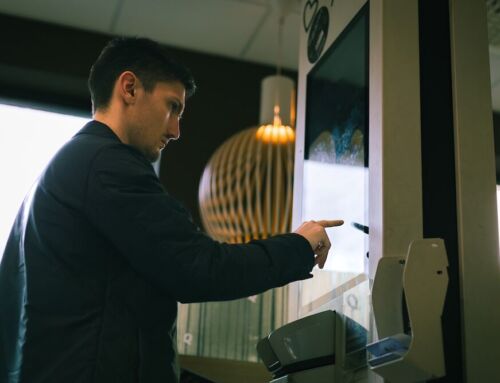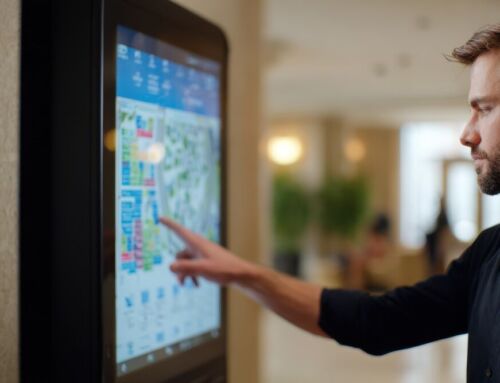Kiosks have come to prominence in the form of self-service checkouts and other types of automated customer transaction.
But placing orders and taking payments is just one of many possible uses for a kiosk. With the right hardware accessories, kiosks can hand control of all sorts of processes to customers or clients, freeing employees to focus on more valuable tasks.
One application more and more organisations are exploring is using kiosks for identification checks and authentication. This might be for entry authorisation onto premises, or document checks at places like airports and government offices, or signing into loyalty or payment accounts.
The beauty of kiosks is the flexibility they provide. However you want to confirm a person’s identity – key fob or cards, scanning documents, biometrics – there are tools available that can be added to a kiosk.
Here are five different ways you can use a kiosk for ID authentication.
RFID Reader
RFID stands for radio frequency identification. Common in digital entry systems for staff and other authorised personnel, RFID chips emit a small but unique electromagnetic signal. When this is picked up by an RFID reader, the presence of that unique chip is registered and can be used to do things like unlock digital doors. RFID chips are easy to install in key fobs or cards. As well as controlling entry systems, RFID chips and readers are used to automate registration in places like colleges and universities, or to identify loyalty scheme members at checkout in retail.
Fingerprint Scanner
Biometrics is a rapidly growing area in identity authentication. The benefits are two-fold. You don’t have to issue anything like a fob or a card, which avoids the risk of people losing or forgetting their ID. And because they cannot be stolen or forged, fingerprint scanning is secure enough to meet the demands of high stakes authentication such as passport control or issuing official documentation.
Retina Scanner / Facial Recognition
Retina scanning is another common technology used for biometric identification. Like fingerprint scanning, it has the advantage of being highly secure, as the patterning at the back of the eye is unique to every individual. However, there can be concerns over how willing people are to look into a scanning module, especially when unprompted at a kiosk. An alternative is facial recognition technology, which uses a simple camera. Once a person is ‘registered’ by having a digital photo of their face taken, all they have to do afterwards is look into a camera and AI software confirms the match.
Digital signature
Signatures have been the cornerstone of identity confirmation for centuries. And while technology has opened up other avenues in the 21st century, there is still room for a signature even in the digital world we live in. Signing contracts, document applications or to receive goods remains part and parcel of everyday life, in both our private lives and the corporate sphere. A digital touchpad and stylus on a kiosk means documents can be signed independently, with the added benefit that they can then be confirmed instantly.
Document scanner
Finally, official documents like passports and driving licences are still widely used as proof of identity, for everything from applying for loans to passing through border control. Traditionally, personal documents were checked and confirmed manually. By having a document scanner in a kiosk, not only is this process automated, but you can also improve accuracy by having software instantly cross reference the scan against an official database.
Want to find out more about kiosk ident solutions? Get in touch with the Acante team to get a full briefing on our latest solutions.




